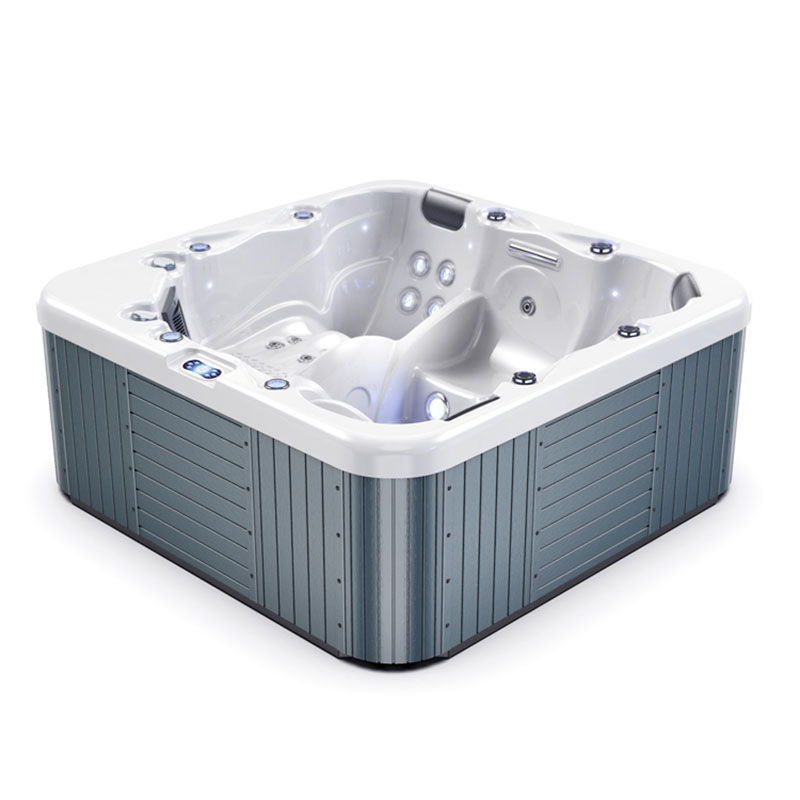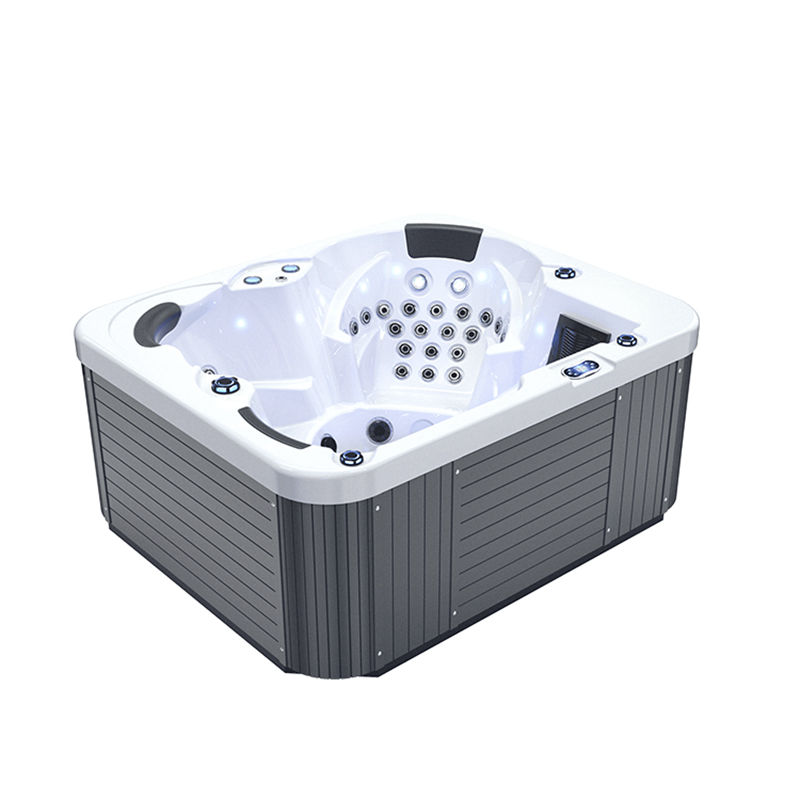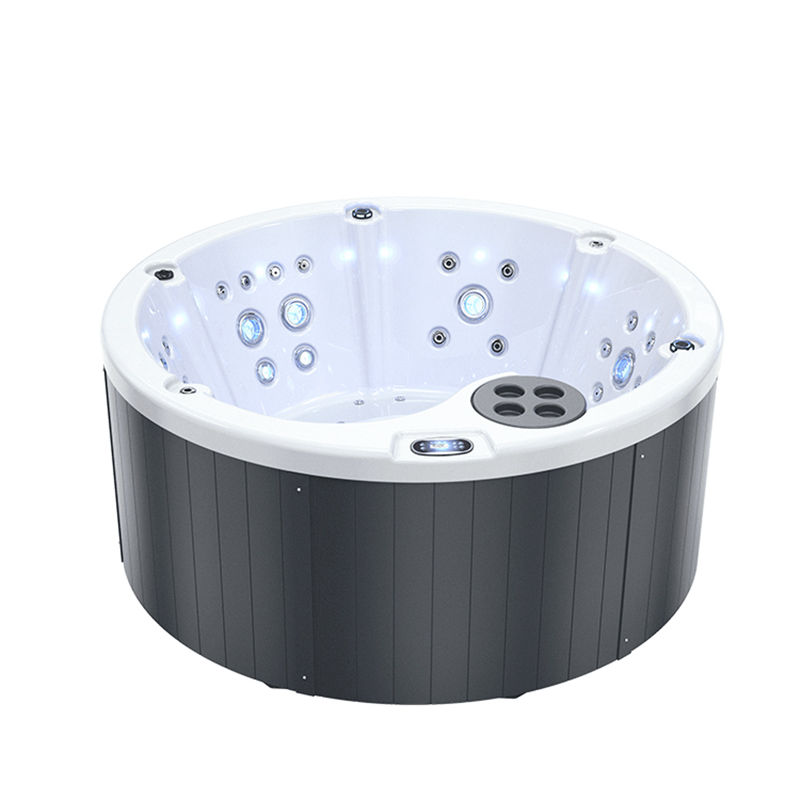Whirlpool spa hot tubs are a popular choice for modern bathrooms due to their comfort, relaxation, and health benefits. They not only provide a warm, hydrotherapy-like experience, but also stimulate blood circulation and relieve muscle fatigue through their massage jets. However, many families encounter a frustrating problem during use: an unpleasant whirlpool spa hot tub odor. This odor not only affects the user experience but may also indicate a problem with the water quality or the equipment.
This article will provide an in-depth analysis of the causes of whirlpool spa hot tub odors, how to identify them, and professional cleaning and maintenance methods. This will help you scientifically and effectively resolve the problem and ensure your whirlpool spa hot tub remains clean and comfortable.
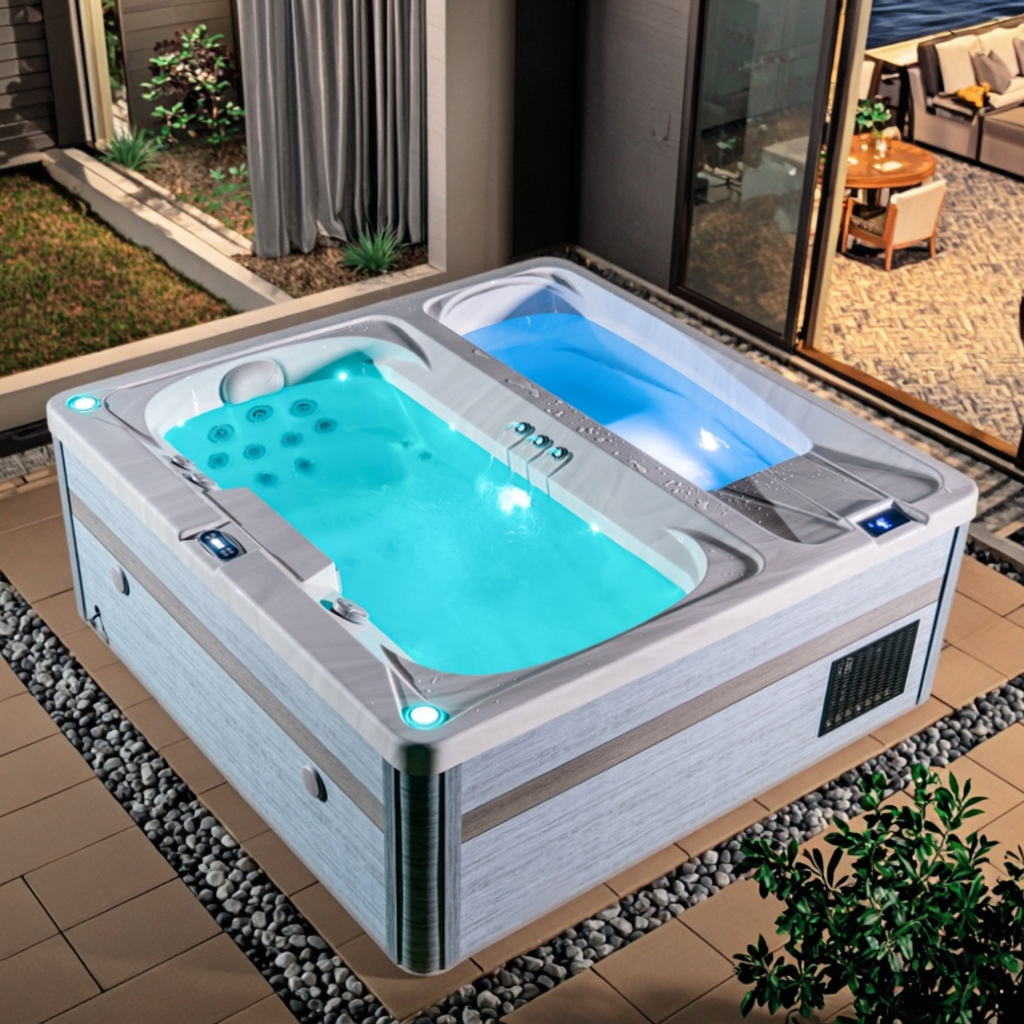
What are the common causes of whirlpool spa hot tub odors?
Whirlpool spa hot tub odors can be caused by a variety of factors, primarily water quality, bacterial growth, scale buildup in the equipment and pipes, and improper water treatment. Understanding the specific cause is key to resolving the issue.
1. Poor Water Quality Causes Odors
If the water in a whirlpool spa hot tub hasn't been changed for a long time, or if the water source itself contains high levels of minerals, organic matter, or trace elements like iron and manganese, it can easily develop an unpleasant odor. Odors are particularly likely to occur in the following situations:
• Imbalanced Water pH: A high or low pH reduces the effectiveness of disinfectants and accelerates microbial growth.
• Excessive Minerals: Excessive levels of minerals like calcium and magnesium in the water can cause precipitation, creating a breeding ground for bacteria.
• Insufficient Disinfectant: Failure to add chlorine or bromine disinfectants in a timely or proportionate manner can easily lead to unpleasant odors.
Therefore, water quality, along with maintenance and management, is crucial for controlling whirlpool spa hot tub odors.
2. Bacterial and Algae Growth
Whirlpool spa hot tubs typically feature a circulation system and jets, with water temperatures between 35 and 40 degrees Celsius (92 to 112 degrees Fahrenheit), providing an ideal growth environment for bacteria and algae. Common problems include:
• Bacterial growth: Bacteria such as E. coli and Pseudomonas aeruginosa can accumulate in pipes, shower heads, and vents, causing a musty or rotten odor.
• Algae growth: If a whirlpool spa hot tub has not been used for a long time or if the water does not have sufficient sunlight, algae may grow, causing the water to have an unpleasant odor and appear green or turbid.
3. Scale accumulation in filters, shower heads, and pipes
Overuse can easily lead to the formation of scale, organic impurities, or microbial film on the internal filters, shower heads, and circulation pipes of a whirlpool spa hot tub. These deposits not only affect water flow and spray effectiveness but also create a breeding ground for bacteria and algae, leading to unpleasant odors.
4. Improper use of water treatment chemicals
Improper use of disinfectants (such as chlorine, bromine, and oxidants) in whirlpool spa hot tubs is also a major cause of odor:
• Insufficient dosage: Bacteria and algae are not effectively killed.
• Overdosage: A pungent chemical odor, such as a strong chlorine smell, may be produced.
• Imbalanced pH and alkalinity: This can reduce the effectiveness of disinfectants, affecting water quality and making odors difficult to eliminate.
Therefore, proper use of water treatment chemicals and maintaining balanced water quality are crucial steps in resolving odor issues.
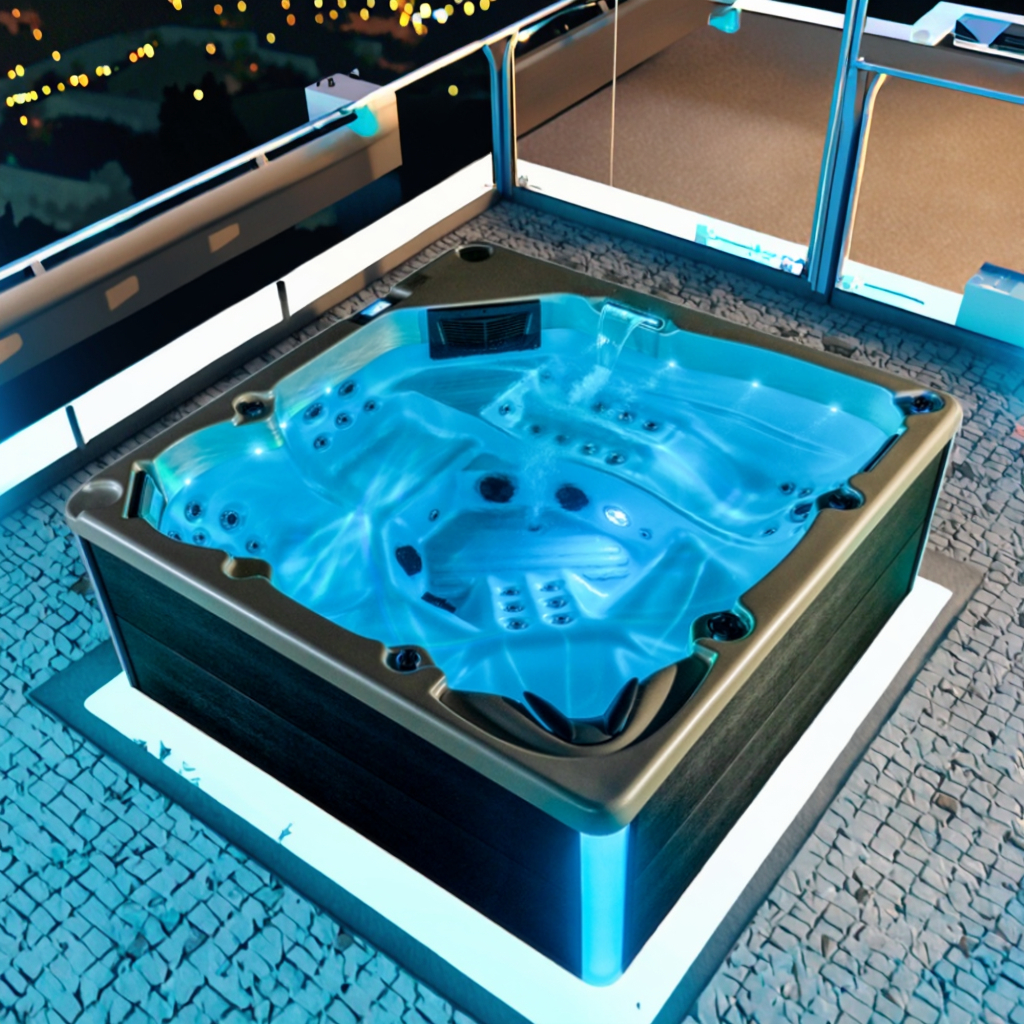
How to identify the type of whirlpool spa hot tub odor?
Scientifically identifying the odor type helps target the problem. Common odor types include:
1. Chlorine or disinfectant odor
• Cause: Excessive chlorine or bromine content in the water, or an imbalanced pH level.
• Characteristics: A distinct chemical odor that is irritating to inhalation, but the water may still be safe.
2. Putrid or moldy odor
• Cause: Decomposition of bacteria, algae, or organic matter.
• Characteristics: Often accompanied by turbid water and deposits on pipes or showerheads.
3. Metallic or sulfur odor
• Cause: High mineral content in the water source or corrosion of the tub's metal parts.
• Characteristics: Clear water with a slight metallic odor that may affect the taste or smell.
By combining sensory evaluation with water quality testing, you can quickly identify the source of odors and select targeted solutions.
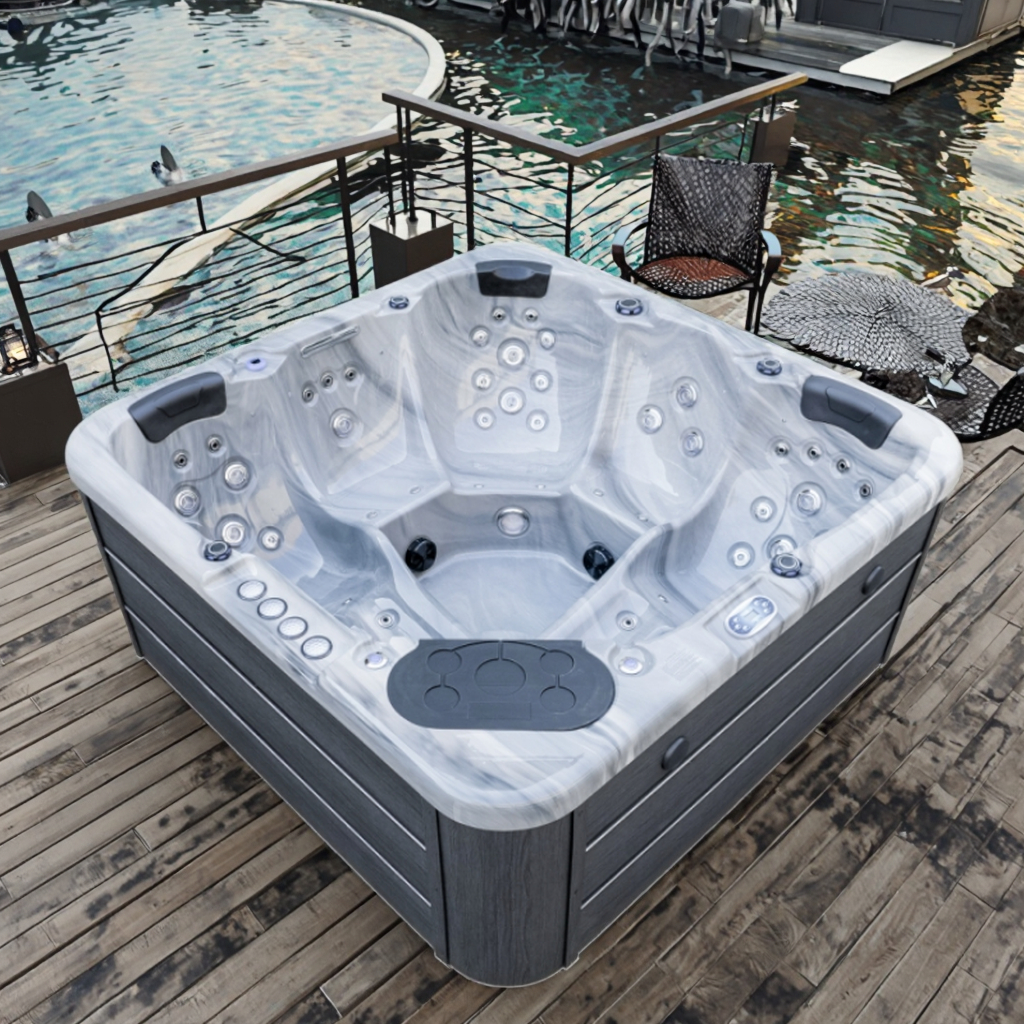
How to effectively clean a whirlpool spa hot tub?
Most whirlpool spa hot tub odors can be improved through systematic cleaning and maintenance. Below are professional, detailed steps:
1. Regularly Change the Water
Regularly changing the water is the most fundamental way to maintain clean water quality and control odors.
• Recommended frequency: Change the water every 3-4 months under normal use. This can be reduced to 1-2 months with frequent use or poor water quality.
• Instructions: Drain the tub, rinse the interior with clean water, and refill with clean water. Calculate the amount of disinfectant based on the amount of water used.
2. Clean the Pipes and Showerheads
Pipes and showerheads are high-risk areas for bacteria and algae. Professional cleaning steps are as follows:
• Drain the tub.
• Add pipe cleaner to the tub according to the instructions.
• Start the circulation system and allow the cleaner to circulate through the pipes and showerheads for 15-30 minutes.
• Allow the cleaner to sit for 30 minutes to an hour to allow the cleaning agent to fully penetrate the sediment and biofilm.
• Drain the cleaner and thoroughly flush the circulation system with clean water to ensure that any residue is removed.
• Use a soft-bristled brush to clean the nozzle surface and filter to remove any buildup.
3. Clean the filter
The filter traps dust, hair, and organic matter, so regular cleaning is crucial:
• Remove the filter and rinse it with clean water to remove any visible debris.
• If the filter is heavily soiled, soak it in a neutral detergent for 30 minutes, then rinse thoroughly.
• Be careful not to use chemical cleaners containing bleach on the filter, as this will damage the material.
4. Adjust water parameters
Maintaining a balanced whirlpool spa hot tub water quality helps control odors:
• pH: Maintain between 7.2 and 7.8. High or low pH levels can affect the disinfectant's effectiveness.
• Total alkalinity: Maintain between 80 and 120 ppm to avoid excessive acidity or alkalinity.
• Disinfectant concentration: 1-3 ppm chlorine, 3-5 ppm bromine.
• Hardness: Adequate calcium and magnesium levels to avoid scale buildup in hard water.
Regular testing with a water quality test kit and adjustments based on the results can effectively control bacterial growth.
What maintenance methods are there after odor treatment?
After cleaning and water conditioning, to prevent odors from recurring in your whirlpool spa hot tub, you need to establish a sound maintenance regimen:
1. Weekly Minor Maintenance
• Test the water quality and add disinfectant as needed.
• Check the filter and showerhead for impurities.
• Run the circulation system for 15-30 minutes to prevent water stagnation.
2. Regular Deep Cleaning
• Deep clean the pipes, showerheads, and filter every three months.
• Use specialized cleaning agents to avoid chemical reactions that damage the equipment.
3. Be mindful of usage habits
• Shower before bathing to minimize the amount of sweat, makeup, and skincare products that enter the water.
• Avoid prolonged water outages or use of untreated water to reduce microbial growth.
• If not in use for an extended period, drain the water and keep it dry to prevent musty odors.
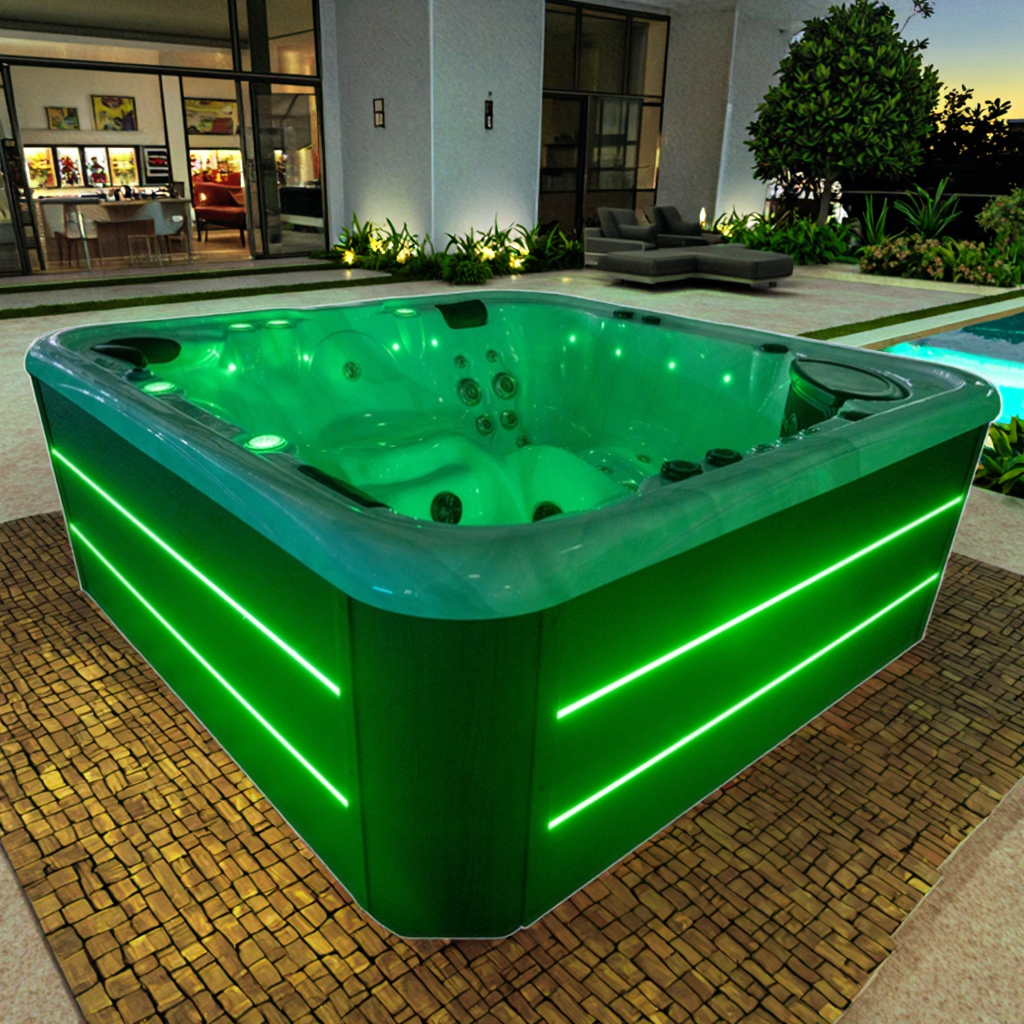
Are there any auxiliary equipment or chemical products that can prevent odors?
To maintain the water quality of your whirlpool spa hot tub, you can use several auxiliary products:
1. Pipe cleaner
Regular use can remove scale and biofilm in the pipes.
2. Enzymes
Decompose organic impurities in the water, reduce bacterial growth, and reduce musty odors.
3. Slow-release disinfectant
Maintain a stable disinfectant concentration in the water to avoid odors caused by insufficient dosage.
Always follow the instructions strictly to avoid imbalances in water quality or the development of chemical odors.
FAQ
Why does my whirlpool spa hot tub still have an odor after adding disinfectant?
Possible causes:
• Scale buildup in the pipes or showerheads prevents the disinfectant from reaching all parts of the water.
• Imbalanced pH levels affect the disinfectant's activity.
• Insufficient or unevenly distributed disinfectant
Treatment: Combine pipe cleaning, filter cleaning, and water conditioning.
How long does it take to eliminate whirlpool spa hot tub odors?
• Generally, professional cleaning and water conditioning will significantly reduce or eliminate odors within 24-48 hours.
• If odors have not been maintained for a long time, repeated cleanings may be necessary to completely eliminate them.
Can household cleaners be used to clean whirlpool spa hot tubs?
Not recommended. Regular cleaners may damage the tub material or react with disinfectants. Use a dedicated whirlpool spa hot tub cleaning product.
What range of warranties do your pumps and controls carry?
Pumps and controls are key to spa performance. We use Balboa and LX systems which carry 2–5 year warranties depending on part type. These are documented in our Sales Quotes and warranty booklets. Buyers can Buy confidently, knowing components are supported by established Brands.
As a Manufacturer, we maintain spare parts inventory to Supply replacements quickly. For Purchasing departments, this coverage reduces risk and ensures that Prices and Discounts still come with strong after-sales protection.


